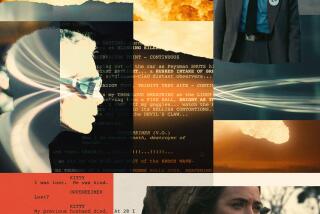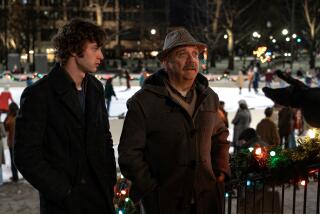Paul Thomas Anderson deploys big cameras in ‘The Master’ [Video]
Writer-director Paul Thomas Anderson’s “The Master” is an intimate look at a troubled drifter played by Joaquin Phoenix. To make it even more intensely personal, Anderson decided to shoot much of the film in the oversized 65mm format.
That rarely used large-frame format -- especially when projected in theaters equipped to show such films -- allows the tightest close-ups to become that much more revealing, which didn’t always make Anderson’s actors comfortable.
In this excerpt from The Envelope Screening Series, Anderson talks about the challenges of using 65mm film, which by necessity requires an enormous camera -- about the size of a chair, Anderson says.
“If anything, I felt self-conscious, sometimes, wheeling this enormous thing in,” said the filmmaker, who chose to work in 65mm because so many World War II films (“The Master” unfolds soon after the war’s conclusion) were shot that way. While he tried to be “respectful” of how the large (and loud) camera would affect his actors, they occasionally resented the intrusion.
“There might have been a little bit of eye rolling from them once in a while,” Anderson said.
In one scene that didn’t make the finished cut of “The Master,” Philip Seymour Hoffman, who plays Lancaster Dodd, the charismatic leader of a new movement, was having a quiet conversation with his character’s daughter. At the end of the take, Anderson said, Hoffman said he’d had enough with Anderson and “his stupid ... camera.”
ALSO:
The Envelope Screening Series: ‘The Master’
Envelope Screening Series: ‘The Sessions’
Envelope Screening Series: ‘Rust and Bone’
More to Read
From the Oscars to the Emmys.
Get the Envelope newsletter for exclusive awards season coverage, behind-the-scenes stories from the Envelope podcast and columnist Glenn Whipp’s must-read analysis.
You may occasionally receive promotional content from the Los Angeles Times.







